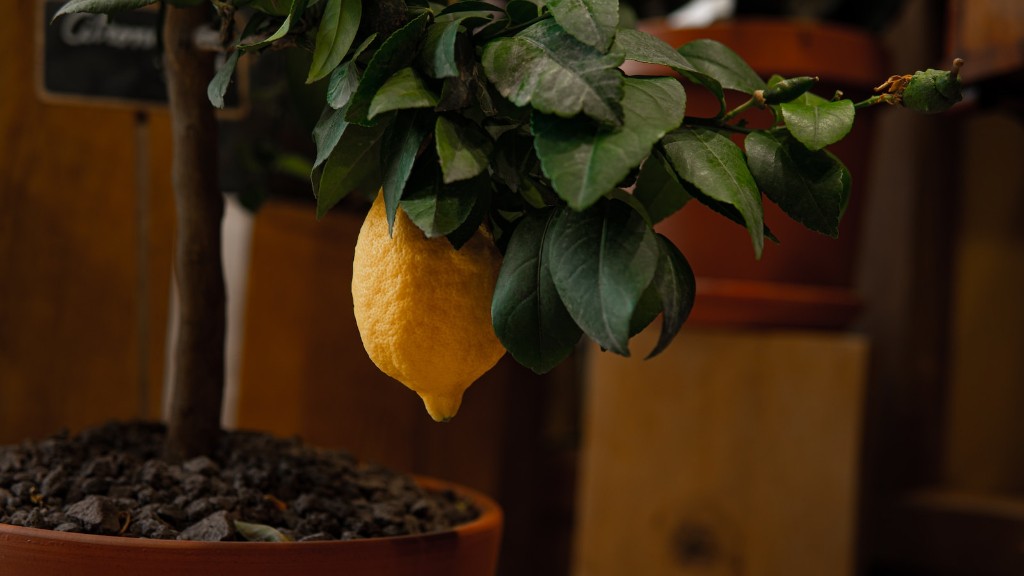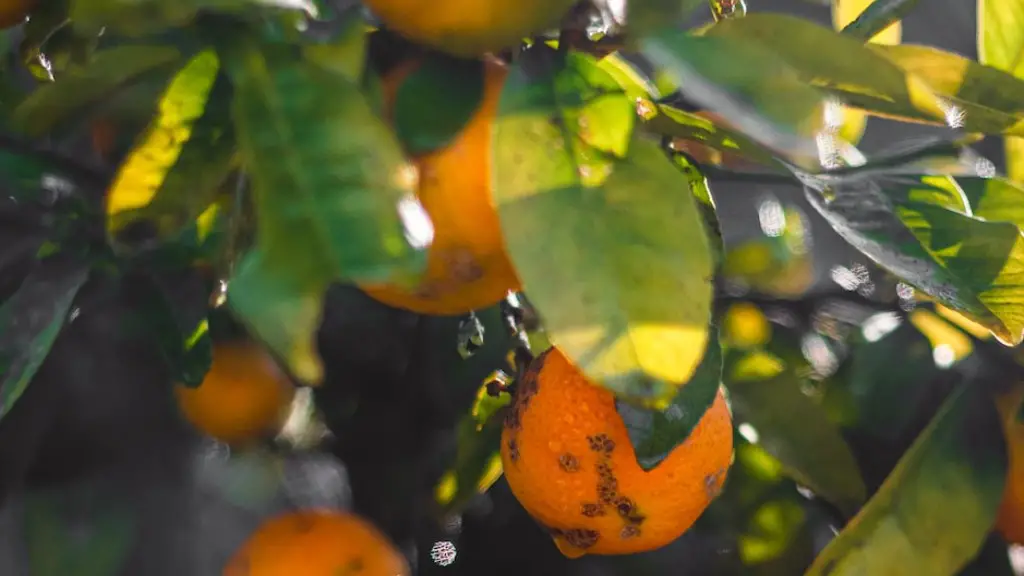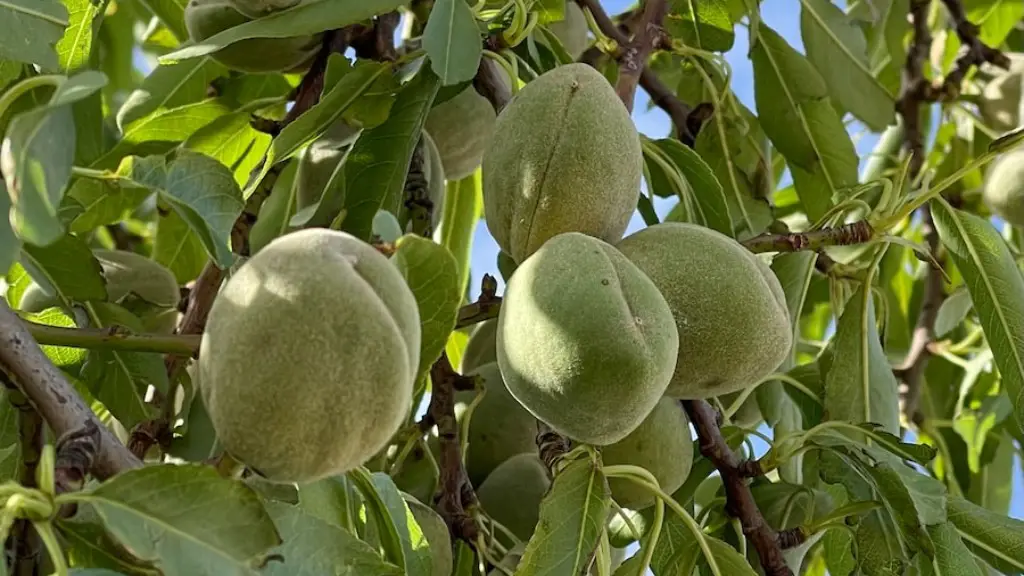Watering a lemon tree in a pot may seem like a daunting task at first, but with the right technique, it’s actually quite simple. To ensure your lemon tree thrives, the key is to give it constant access to moisture, without overwatering it. Here’s how you do it.
To start, pick a pot that’s twice as wide than the root ball of your lemon tree, so there’s enough space for the root to spread. And, line the bottom of the pot with small stones or pebbles to help with drainage.
Ensure that the soil for your lemon tree is well-draining and made up of equal parts loam and peat moss. This combination will retain the right amount of moisture without becoming waterlogged.
To check if it’s time to water your plant, place your finger two inches deep into the soil. If it feels dry, your lemon tree needs water. If it’s damp, wait a day or two before checking again.
When you do water your plant, use lukewarm water and pour it over the top of the soil, making sure the roots get soaked. Let the excess water runoff, and then discard it. Don’t let the tree sit in waterlogged soil, as this can cause root rot.
Water your lemon tree every few days in summer, and every week or two in winter, although this will vary depending on the weather and type of soil. Whenever the temperature rises significantly, increase watering frequency.
Finally, place your lemon tree in a spot that receives a good amount of natural sunlight, and make sure the environment is evenly warm—optimal temperatures should be between 60-72°F. Doing this will ensure your lemon tree receives everything it needs to thrive.
Ideal Soil
The ideal soil for a lemon tree should be lightweight and well-draining, as this will ensure an optimal balance of moisture and air. Additionally, the soil should be acidic to allow the roots to absorb enough nutrients. The best combination is equal parts sandy loam and peat moss.
Sandy loam is made up of tiny particles that easily move through the soil and help with drainage. Meanwhile, peat moss helps store moisture, which is essential for the lemon tree’s needs.
Combining the two will give your tree the best environment to develop, as it will be able to regulate the moisture levels far better than if you only used either of them on their own. Additionally, this mixture will help reduce the chances of root rot.
When it comes to buying soil, make sure you get a pH-neutral kind, rather than the fortified kind. The rich nutrient content of the fortified soil will give your plant too much nitrogen, and therefore can cause the lemon tree to become stunted.
Water Quality
As aforementioned, water is essential for a lemon tree to thrive. But don’t just fill your pot up with water straight from the tap. Tap water can contain too much chlorine, which can disrupt the tree’s ability to absorb minerals, as well as lead to root irritation.
The best solution is to use bottled rain water, which is far purer. Alternatively, you can leave the tap water in a container for a day before using it. Doing this will allow the chlorine time to evaporate.
In addition to being free from chlorine, the water has to be lukewarm in temperature. Anything above that can shock the tree’s roots and cause them to die off. Too cold of water can also cause the roots to become rigid.
When pouring water over the tree, make sure it’s well-distributed. Avoid pouring the water in one heavy stream as this can cause root rot. In the same vein, make sure the pot has a hole at the bottom to allow the excess water to drain out.
Water Frequency
Lemon trees require different amounts of water in summer than they do in winter. In hotter weather, the tree will usually need water every two or three days, or whenever the soil feels dry. During winter, the water requirements will decrease and the tree should be watered every week or two.
It’s important to pay attention to the temperature, as huge spikes of warmth can cause the tree’s water requirements to increase too. As such, during particularly hot days, water more frequently.
It’s also worth keeping an eye on the humidity of the air, as this can affect how much water the tree needs. If it’s already humid, the tree won’t require as much water as if the environment was drier. On the other hand, if the air is very dry, water more often.
Finally, a general rule of thumb is to water the tree until the soil looks moist, but not soggy. This will ensure the tree gets enough water without the risk of it becoming waterlogged.
Nutrient Supplements
Besides water, lemon trees need nutrients to grow properly. To get these, you can buy citrus fertilizer and feed your tree every three months. Alternatively, use compost when potting the tree, as this will provide it with enough nutrients for the first year—two years if you use mature compost.
Once the tree has been around two or three years, you’ll need to supplement its nutrient intake with fertilizer, as this will increase the size, flavour and productivity of the lemons.
When buying fertilizer, check the packaging to find one with a higher nitrogen content, as this will provide the lemon tree with the energy it needs to produce good-quality lemons. Also, avoid buying too much too soon, as this can cause a nutrient overload and damage the tree’s roots.
If you’re not sure how much to use, reach out to your local nursery for assistance. They’ll be able to recommend the best type and quantity for your tree’s age and size.
Pruning
The last step in caring for a lemon tree in a pot is regularly pruning its branches. Pruning helps the plant to develop a healthy structure and growth habit, as well encourages more lemons to form.
In the spring, take off any leaves or branches that appear diseased or infected. After you’ve done this, take off any twigs that are smaller than a quarter inch, as these won’t produce fruit.
When it comes to shaping the lemon tree, start by taking off any branches that are competing with the main leader. Prune these off, and then shape the remaining branches into a pleasing structure.
Additionally, remove any flowers and fruit that appear weak or ragged. Finally, try to take off just the right amount of branches so that the lemon tree has the energy to produce more flowers, as these will become lemons later on.
Protecting Your Tree
One other thing to bear in mind when caring for a lemon tree in a pot is that its branches are more prone to freezing over if it’s exposed to cold weather. During the winter, therefore, relocate your lemon tree inside or to a warmer spot.
You can also provide a source of external heat if the cold is unusually severe. For example, you can place a small heater close to the tree, as long as it doesn’t come into contact with its branches.
Be sure to cover your tree with a sheet or blanket when moving it outside the house. This will help the tree to keep warm, and also protect it from wind damage. Additionally, it’ll protect the tree from sudden changes in temperature which can cause shock.
Finally, during the colder seasons, don’t water your tree as frequently. This will prevent the frozen roots from absorbing too much moisture and suffering from cold damage.





